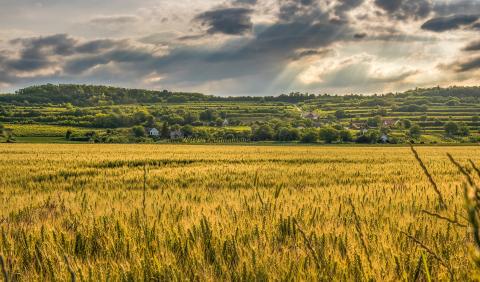
Genetic diversity of wheat on a landscape and resilience of its production
The commercial cycle of varieties in France is linked on the one hand to the rules of registration in the catalog, which condition the entry on the market of varieties demonstrating genetic progress, and on the other hand to the post-registration evaluation and performance carried out by farmers. Data on the commercial success of varieties in the different French geographical sectors are increasingly available (FranceAgrimer-Arvalis statistics). Those produced on soft wheat have been studied by our team, which has revealed that the diversity of varieties grown in a department was only partially correlated with genetic diversity, due to similarities between varieties1 . These same statistics, crossed with information on varietal resistance to stripe rust, allowed us to highlight durable resistance2.
Thus, the use of variety deployment data is strategic for two types of analysis: it allows us to:
- reveal genes and traits that are critical for adaptation to certain regions, production systems or markets
- to characterize the genetic diversity (molecular and functional) deployed on a landscape, and to anticipate the resilience of the landscape to environmental hazards (pathogen pressures).
The objective of the thesis will be to:
- describe the genetic structure of about 600 wheat varieties registered since 1981, using the genotyping information available at GDEC
- develop original analyses to link the commercial performance of these varieties to their genetic composition;
- establish indicators of genetic and functional diversity in the landscape, and
- evaluate their link with the resilience of wheat production. This last point will be more specifically explored by testing the relationships between landscape diversity for resistance genes and the evolution of pathogen populations, thanks to BIOGER's expertise on this issue.
The thesis (2022-2025) is funded by the SEVE doctoral school of the University of Paris-Saclay. It involves at least 2 laboratories of C-BASC and the graduate school Biosphera, 2 laboratories external to the university (GDEC, IGEPP) and the cereal technical institute ARVALIS. The student Konilo Zio is directed by Jérôme Enjalbert (GQE-Le Moulon, INRAE) and supervised by Sophie Bouchet (GDEC, INRAE), Tiphaine Vidal (BIOGER, INRAE) and Timothée Flutre (GQE le Moulon, INRAE).
Sources: 1 Perronne & Goldringer. 2018 2 Perronne et al. 2017a.

